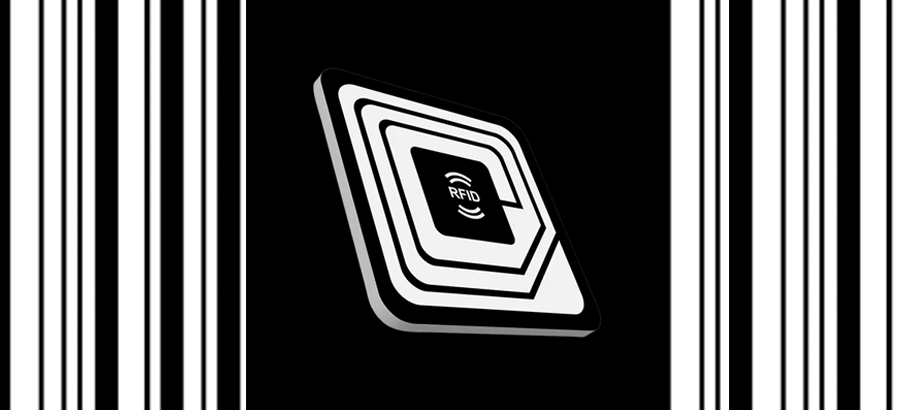Radio Frequency Identification, or RFID, has been the next-generation technology to replace barcodes for some time. While RFID hasn’t come close to eclipsing barcodes yet, adoption of the technology continues to grow.
While there are some novel uses for RFID, most companies employ RFID to do the same things as barcodes, and for the same reasons.
When deployed on a production line, both technologies can be used to increase visibility into work in progress on the shop floor which, with the right systems, can result in reduced downtime and improved efficiency. This visibility also makes it possible to accurately estimate production times for customers.
RFID uses a combination of tags and scanners to scan items and send the data to your ERP system. The tags have to be affixed to whatever it is you want to track while scanners can be hand-held or located in different areas to automatically scan everything that comes through.
They can be used to track inventory accurately with very little effort. This can make a significant contribution to a company’s purchasing and replenishment strategy resulting in reduced carrying charges and material shortages. Improvements in these business functions can have far reaching benefits. For example, when raw materials are tracked more accurately, sales staff can depend on the business systems’ finished goods ATP (available to promise) calculation.
The practical differences between RFID and barcodes as they apply to manufacturers and distributors are as follows.
Efficiency
RFID can automatically scan all of the items in a shipment without human action.
Barcoding requires line of sight to scan. In situations where individual items need to be scanned, someone needs to unpack the pallet or package and scan each item individually. Barcoding is better suited to situations where scanning is done at the pallet level using a license plate code, but it still requires someone to find and scan the barcode.
RFID tags can be encoded both with the product information and a unique ID which lets the software that handles the scans to automatically detect and reject duplicate scans of the same item.
Accuracy and Reliability
Because RFID can be fully automated, it makes it practical to scan more often and more thoroughly, thereby reducing errors while giving management better data.
Metal and water can interfere with radio frequencies requiring some combination of more expensive, specialized RFID tags, as well as a plan to place the tags at a specific place and arrange items in a specific way.
Barcoding is more subject to human error as people can get distracted and miss items or duplicate scans.
Expense
RFID can be expensive to implement.
Implementing barcodes costs less than RFID and it is more widely used, so knowledgeable help is easier to find and less expensive.
Inexpensive RFID tags cost about 20 cents each while RFID tags for specialized applications can cost upwards of $10 each. That cost is going down, but it still limits the practical applications of the technology.
Environment
Dirt, dust and weather can obscure barcodes making barcodes unsuitable for certain environments.
RFID can be a suitable alternative in environments where barcodes are not practical.
Conclusion
The main push for RFID is coming from retailers who gain the most from its use. As prices come down and retailers demand that more of their suppliers use RFID, RFID will become another cost of doing business. Smart manufacturers and distributors will take their retailer-mandated implementations and look for ways of using the technology to improve business practices. This will help mitigate the costs, and turn it in to a competitive advantage.
Until then, barcoding will be the cheaper, safer alternative for most businesses. That doesn’t mean a business case can’t be made for RFID, but, as these things often do, the business case will depend on the specifics of your business.






